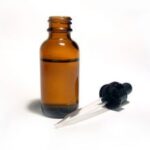Melaleuca alternifolia, better known as Tea Tree, is one of the most versatile essential oils available on the market today, as well as being one of the best known. With a spicy, perhaps woodsy, and almost medicinal smell, pure Tea Tree essential oil is not the best smelling stuff, but with a wealth of therapeutic uses, Tea Tree Essential Oil’s scent is easily an acquired one.
Essential oils can be used for therapeutic or medicinal purposes, and this article will touch upon several such uses. However, it is important to always remember that anything on the internet, using essential oils, and things a writer puts up on a webpage should never be used as a substitute for true medical care from a qualified health professional should such care be necessary.
When learning more about essential oils, one will clearly see that most essential oils state clearly that the user must dilute the oils with another carrier base. Tea Tree is one of the few essential oils where most manufacturers indicate Tea Tree is safe to use undiluted.
The melaleuca alternifolia plant is from the myrtle plant and tree family, and these plants are known for their topical anti-fungal and anti-bacterial properties. The aboriginal tribes would chew on the leaves to help alleviate headaches and would pack food in the leaves to help prevent spoilage.
More modern uses for the distilled Tea Tree Oil have been found. Let’s look at a few of the most popular topical uses for Tea Tree Oil.
Tea Tree Oil For Skin Care
Acne – Tea Tree Oil can be used full strength directly on skin blemishes, the surrounding area, or drops of Tea Tree Oil can be added to a liquid soap and used to wash the entire affected area. Tea Tree Oil will speed healing and may help reduce scarring. Apply two to three times daily, particularly at night.
Cell Renewal – Tea Tree Oil has been shown to help regenerate skin cells, so adding a few drops of Tea Tree Oil to a moisturizer or night cream may help repair dull skin and help promote cell regeneration. Tea Tree Oil is often found listed in the ingredients of skin care products by its Latin name.
Sunburned Skin – Aloe or alcohol free aloe vera gel can be mixed with Tea Tree Oil to provide soothing burn and itch relief. Equal parts of Tea Tree Oil and Vitamin E oil can be applied directly to keep skin moist and promote healing.
Skin Conditions (Eczema, Psoriasis, etc). – Apply Tea Tree oil full strength to any affected area or mix Tea Tree Oil with other topical treatments before application.
Poisoned Plants (Ivy, Oak, Sumac) and Allergic Skin Reactions – For small areas or patches, apply the Tea Tree oil directly to the affected area. If the skin irritation takes up a larger area, Tea Tree Oil can be mixed with equal parts of a base or carrier oil (grapeseed oil, olive oil, massage oil with no alcohol) or a cream or lotion made to treat such allergic skin reactions. Tea Tree Oil soothes itchy skin almost immediately.
Tea Tree Oil For Injury
Insect or Spider Bites or Stings – Tea Tree Oil can be applied directly to the insect bite or sting either by dropping the Tea Tree Oil directly onto the bite or using a cotton ball to swab the area. Tea Tree Oil will almost immediately relieve minor pain, burning or itching from a bite or sting and may help promote faster healing of the affected skin. Tea Tree Oil can also be diluted in a non-fragranced spray or directly applied to all exposed skin as an insect repellant.
Minor Cuts and Scrapes – Gently wash the affected area with a mixture of Tea Tree Oil and water to flush any debris away from the cut or scrape. Once washed, applying Tea Tree Oil directly to the cut or scrape several times per day can help promote faster healing while also providing anti-bacterial properties. A drop or two of Tea Tree Oil can also be applied to the inside of a bandage before applying the bandage to the cut.
Minor Burns – Iced or very cold water can be used to flush a burned area and help relieve immediately pain. Once the burned area has been cleansed, carefully adding a few drops of Tea Tree Oil to the burn several times per day can help keep the skin moist, which can reduce pain and itching when the skin begins to heal, and also help prevent infection. Tea Tree Oil may also help reduce or prevent burn scars. Lavender essential oil can be used along with Tea Tree Oil to reduce scarring and soothe the pain and itch of a burn.
Tea Tree Oil For Ailments
Warts and Cold Sores – Tea Tree Oil has been shown to help remove and reduce the duration of warts and cold sores, both of which are caused most commonly by viruses. For both ailments, use several drops of Tea Tree Oil to saturate the wart or sore and apply several times per day. Cold sores should greatly improve within a day or two. Warts will take longer, but with continuous application, Tea Tree Oil may remove a wart without any harsh or painful chemical or burning/freezing techniques.
Tea Tree Oil for Hair and Scalp Care
Dandruff – Add 2-3 drops of Tea Tree Oil to your shampoo and wash twice daily until dandruff is gone, then once daily thereafter to prevent dandruff. Lather with the Tea Tree shampoo and let sit for 1-2 minutes before rinsing.
Itchy Scalp – Just as Tea Tree Oil helps with all other skin itches, itchy scalp can be treated with Tea Tree Oil the same way dandruff is treated. Additionally, Tea Tree oil can be massaged directly into the scalp after shampooing for additional itch relief and prevention.
Lice – Tea Tree Oil added to your shampoo has been shown to repel lice when used regularly. Once infested, Tea Tree Oil does not remove lice from the hair nor does it kill lice, but it can help repel lice from ever attaching to hair. If you have a child who attends school, using a Tea Tree Oil shampoo mixture regularly may prevent lice completely, even if the child is exposed to it at school.
Tea Tree Oil for Fungus
Nail Fungus or Infections – When manicuring or trimming nails, a drop of Tea Tree Oil on the nail bed and the cuticle can prevent infection and soften cuticles and nails. If fungus or infection already exists, massing Tea Tree Oil into the nails and cuticle several times per day without rinsing may help. Additionally, soaking nails in Tea Tree Oil with another carrier oil can help prevent infection and improve nail health.
Athlete’s Foot – Athlete’s foot is a fungal infection usually affecting the toe area of the foot. Tea Tree Oil can be applied directly to the affected area at full strength, or a foot soak with 10-15 drops of Tea Tree Oil in lukewarm water (very hot water can dilute the effect of the Tea Tree Oil), for about 15-20 minutes, once or twice a day, should clear up athlete’s foot quickly.
Tea Tree Oil for Oral Care
Gum Disease – Tea Tree Oil doesn’t have the most pleasant aroma, but that’s nothing compared to the taste. However, Tea Tree Oil is highly effective at treating and preventing certain types of gum disease. A few drops of Tea Tree Oil used along with your regular toothpaste can help with the taste.
Tooth Infection and Toothaches – While it is recommended one visit the dentist if there is a problem with a toothache or infection, Tea Tree Oil can provide some healing and relief prior to that visit and may help reduce or eliminate an existing infection. Brushing with Tea Tree Oil may help prevent tooth infection and when applied directly to a toothache, Tea Tree Oil provides soothing pain relief.
***
As you can see, Tea Tree Oil even just for topical use has many wonderful benefits. We haven’t even touched on the aromatic and dietary benefits this unique and diversified essential oil can provide, but that is for another article.
Let’s sum this up by saying, Tea Tree Essential Oil is not very expensive comparatively, but the cost can vary greatly from one manufacturer to another.
When one takes into consideration that anything put on the skin is absorbed by the body, whether it is a lotion, cream, perfume, and therefore, one should try to use the most pure and natural ingredients in all skin care and topical treatments.
Because of this, it is important not to search for the cheapest essential oil available, but rather to look for a manufacturer that distills high quality and preferably dietary grade essential oils. Even though dietary grade, high quality melaleuca alternifolia or Tea Tree Oil, might be a bit more expensive than a lower quality essential oil, using the higher grade oil will provide better and faster benefits while using less product, effectively saving you money.





